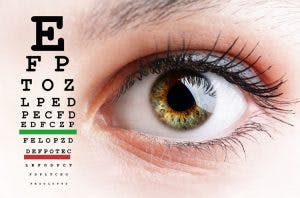Primary progressive aphasia is a neurological syndrome that slowly and progressively impairs a person’s language abilities. Symptoms usually begin gradually, often starting with minor naming and word-finding problems. As symptoms worsen, individuals eventually may lose the ability to produce and understand written and/or spoken language.
This article will discuss the major causes of primary progressive aphasia and how to recognize its early signs. Although there is currently no treatment, early intervention with speech therapy may help slow the progression.
Use the links below to jump straight to any section:
Causes of Primary Progressive Aphasia
Unlike other types of aphasia, primary progressive aphasia (PPA) is not caused by acquired brain damage from a stroke or brain injury. Rather, it results from specific types of dementias that can cause the tissues within the language centers of the brain to slowly deteriorate, leading to a gradual loss of language skills.
Between 60 and 70% of primary progressive aphasia cases are caused by frontotemporal dementias, a group of disorders that lead to the degeneration of the frontal and temporal lobes of the brain. The remaining 30-40% of PPA cases are caused by an atypical presentation of Alzheimer’s disease.
In most people with Alzheimer’s, the areas of the brain associated with memory become damaged by amyloid plaques and neurofibrillary tangles. However, in those with PPA, these plaques and tangles affect the language centers of the brain rather than the memory-related areas.
Risk factors for primary progressive aphasia include:
- Genetic mutations. Although uncommon, certain genetic mutations are linked to this type of aphasia. Individuals are more likely to develop PPA if someone in their family has also been diagnosed.
- Learning disability. Being diagnosed with a learning disability as a child, particularly developmental dyslexia, increases the risk of primary progressive aphasia. However, most people who have dyslexia will not develop PPA.
While stress and anxiety may exacerbate symptoms, they do not cause PPA. However, many individuals mistakenly attribute their initial language difficulties to these factors.
Frontotemporal Dementia and Primary Progressive Aphasia
Primary progressive aphasia often stems from frontotemporal lobe dementia. This type of dementia is characterized by focal syndromes, such as progressive language deterioration or behavioral changes. Since symptoms are usually focused on a specific function, it may seem to mimic changes seen after a stroke or brain tumor, where a specific area of the brain is damaged. This is in contrast to other types of generalized dementia, such as Alzhiemers, where symptoms are more diverse.
Individuals with frontotemporal dementia experience a deterioration of nerve cells in the frontal and/or temporal lobes of the brain. This may result in changes such as a loss of high-level cognitive functions, language difficulties, behavioral/emotional changes, and altered personality traits.
Frontotemporal dementia is not as common as other types of dementia, but tends to occur in younger individuals, with 60% of cases occurring in those between ages 45 and 60. Because of this, many cases of primary progressive aphasia are diagnosed before age 65, although it can also be diagnosed later in life.
Types and Symptoms of Primary Progressive Aphasia
Individuals typically begin experiencing symptoms of primary progressive aphasia between the ages of 50-70 years old. Early symptoms can vary, depending on which part of the brain’s language areas deteriorate first.
In fact, there are three main types of progressive aphasia that individuals can develop, each causing different initial symptoms. These types, referred to as variants, include:
1. Logopenic Variant: Problems with word-finding
This type is most similar to conduction aphasia or anomic aphasia, as it affects the ability to repeat or recall words. Initial symptoms include:
- Difficulty retrieving words
- Frequent pauses while searching for words
- Difficulty repeating phrases
- May use word substitutions or fillers (e.g “that thing over there”)
- Often retain the ability to participate in small talk fluently
2. Semantic Variant: Problems with understanding words
This type is similar to fluent aphasia or transcortical sensory aphasia in that it typically affects language comprehension first. Symptoms include:
- Difficulty understanding spoken or written language
- Trouble with word definitions
- Challenges with naming objects
3. Nonfluent/Agrammatic Variant: Problems with word order and language production
This type shares many characteristics with expressive aphasia, which affects a person’s ability to produce language. Symptoms may include:
- Slow, laborious speech
- Difficulty understanding complex sentences
- Poor grammar when writing or speaking
- Sometimes accompanied by speaking errors such as incorrect speech sounds or reversals (e.g. “yes” rather than “no”)
- Can still understand single words and simple sentences, but may struggle with more complex sentences
Individuals may present with symptoms of more than one type of PPA. Furthermore, they may have only some, but not all, symptoms of a specific variant. In order to be diagnosed with primary progressive aphasia, individuals must have experienced a language impairment as their primary symptom for at least 2 years, without the presence of other cognitive or behavioral disorders.
Of note, the logopenic variant is typically caused by Alzheimer pathology, while the other two variants usually result from frontotemporal dementias. Because PPA is a progressive disease, symptoms will gradually worsen with time.
Primary Progressive Aphasia Stages
Researchers have divided the progression of PPA into six stages. While each variant of PPA has a slightly different progression of symptoms, the following staging system gives an idea of what to expect:
Stage 1, Very Mild
Individuals start to experience symptoms, such as difficulty with word-finding, spelling, and comprehension. As symptoms are very mild in this stage and may appear only intermittently, many inaccurately attribute language difficulties to stress or aging. While individuals may not receive a definitive PPA diagnosis at this point, they may benefit from a medical consultation.
Stage 2, Mild
Communication difficulties begin to become more evident, even to those who do not know the individual well. While some individuals may be able to identify their symptoms, others lack insight into their condition. At this stage, PPA can usually be diagnosed.
Stage 3, Moderate
Communication difficulties begin to interfere with social activities. Individuals often have to quit working and may require further assistance for advanced daily tasks. Difficulties may begin to branch outside of the language realm and into other cognitive skills. For example, individuals may start to have trouble finding items in cupboards and determining distances when driving.
Stage 4, Severe
Individuals require daily support, and may no longer be able to live independently. Many require assistance with tasks such as dressing and may have trouble walking. They may be unable to write or draw, understand yes/no questions, or recognize familiar faces.
Stage 5, Very Severe
At this stage, individuals have often lost the ability to participate in meaningful communication, and may be unable to understand simple messages, produce intelligible speech, or read simple words. Both cognitive and physical skills continue to deteriorate, and they often require assistance with most self-care tasks.
Stage 6, Profound
By this point, the ability to communicate is completely lost. Many are immobile and unable to participate in self-care or respond to their environment. It is recommended to initiate end of life care at this stage.
Each individual moves through this progression at a different pace. While there is no known cure for PPA, utilizing supports in the early stages can help to slow the progression. Medications and rehabilitation may help individuals maintain their current skills and delay further deterioration.
Prognosis: Life Expectancy after Diagnosis
Early diagnosis and intervention can help slow the progression of primary progressive aphasia. However, as a progressive disease, individuals will gradually lose language skills and other functions over time.
A 2021 study examining survival of individuals with each variant of PPA revealed the following life expectancies after symptom onset:
- Logopenic variant: 7.6 years
- Semantic variant: 12 years
- Non-fluent variant: 7.1 years
It is important to remember that these are only averages. Some individuals may be able to live even longer.
However, with this in mind and knowing the progressive nature of PPA, individuals and their families are encouraged to take steps to plan for the future. Making decisions early on regarding estate planning and end of life care may reduce stress over time and improve quality of life for both the individual and their family members.
Complications of Primary Progressive Aphasia
Although each type of primary progressive aphasia begins with different initial symptoms, all three eventually lead to a complete loss of language skills. As the condition progresses, other cognitive functions, such as memory and concentration, may become impaired.
Some individuals also develop motor disorders, such as difficulty with movement and coordination. This can lead them to require help with daily care. This is common in the later stages of PPA.
Finally, many individuals with PPA develop depression as a result of the social isolation that the condition causes. Other problems can include poor decision-making and inappropriate behavior. These occur as a result of further deterioration of the frontal lobe.
Disease progression may also vary according to the type of PPA. A recent literature review reported that those with the logopenic variant often experience a more intense cognitive decline, while those with the semantic variant had more behavioral challenges. Individuals with the nonfluent/agrammatic variant were reported to demonstrate more severe language production challenges and functional difficulties.
Managing Progressive Aphasia
There is no cure for progressive aphasia. Instead, treatment is focused on slowing the progression of the disease. Speech therapists also seek to help the person adapt to loss of language skills. For example, some individuals benefit from learning sign language or other alternative communication techniques.
Family members may also be involved during speech therapy sessions to learn the best ways to support the individual’s current language abilities. Speech therapists may recommend family members help manage primary progressive aphasia by:
- Asking yes or no questions. Family members and friends should try to use yes or no questions as often as possible. This puts less strain on the person with aphasia and will make conversation flow more smoothly.
- Listening. One of the best ways to slow progressive aphasia is to practice speaking. Therefore, encourage the individual to speak as much as possible, even if it is difficult. If the individual is struggling, ask if they need help before jumping in to assist them.
- Sticking to small groups. A small group puts less pressure on the person with aphasia to do all the talking, and allows them to respond when they would like. Be sure to include the individual with aphasia in conversation and keep them involved, but don’t push them too hard.
- Using pictures and drawings. The left side of the brain controls language, but the right is responsible for non-verbal and visual functions. This means the ability to draw and interpret images is usually still intact in people with progressive aphasia. If communication is especially difficult, try drawing rather than speaking.
Electronic devices might also be able to assist or replace speech for some people. However, because they require a good understanding of conventional language, they are more suited for individuals whose cognitive skills are not yet severely impaired.
Speech Therapy for Primary Progressive Aphasia
Although there is no treatment for primary progressive aphasia, speech therapy is sometimes able to slow the progression of the disease. This can help individuals retain language skills for as long as possible and maintain their independence. Although speech therapy exercises vary depending on the needs of the individual, common treatments include naming exercises or script training.
Speech therapy exercises work by activating neuroplasticity. Neuroplasticity refers to the brain’s ability to form neural pathways in response to repetition or changes in environment.
These pathways can allow undamaged portions of the brain to take control of functions that were previously controlled by damaged areas. Therefore, even if progressive aphasia damages the brain regions that normally control language production, it may still be possible for other areas to compensate.
To activate neuroplasticity, individuals must engage in repetitive exercise. As a specific task is practiced, the brain will create and strengthen the neural pathways associated with that task. With these new neural pathways in place, individuals can begin to regain speech and language functions.
One helpful way to practice therapy exercises every day is to use speech therapy apps, such as the CT speech therapy app. This top-rated app was designed by speech-language pathologists to help individuals regain speech, memory, and cognitive function. Featuring over 100,000 exercises that can be tailored to one’s strengths and needs, using the app can help slow the progression of aphasia and possibly even promote restoration of some language functions.
Of note, some individuals may also benefit from medications to slow the progression of PPA. Talk with your doctor for further information on what could be right for you.
Understanding Primary Progressive Aphasia
Primary progressive aphasia is a neurological disease that causes a person to gradually lose their language skills. The condition progresses slowly, and it can take several years before the individual completely loses their ability to communicate. Other complications associated with PPA include depression, impulsivity, and difficulty coordinating movements.
Speech therapy can help slow the progression of PPA and preserve communication skills for a few more years. Speech therapists can also teach alternative communication techniques to allow individuals and their families to communicate even when traditional speech is no longer possible. Talk with a specialist to learn more about primary progressive aphasia and how to manage it.










